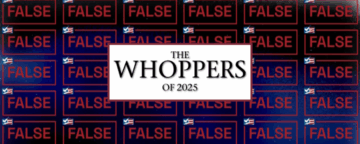A new paper by researchers at the Annenberg Public Policy Center (APPC) of the University of Pennsylvania in the journal Social Psychological and Personality Science shows that policymakers are more likely to support “prosocial” policies in response to the opioid epidemic, including harm reduction measures such as syringe service programs to reduce the risk of injection drug use, when they witness prosocial behaviors – acts intended to benefit others – in their communities.

Employing a unique methodological approach, Haesung Annie Jung, an assistant professor at Texas Tech University (and formerly at the University of Pennsylvania) and Dolores Albarracín, the Amy Gutmann Penn Integrates Knowledge University Professor and director of APPC’s Communication Science division, examine how prosocial behaviors spread across social hierarchies involving authorities and constituents. These findings, Albarracín said, show the potential of communities to exert a positive influence on authorities, and thereby serve the greater good.
Albarracín said the research “helps to explain the elusive connection between the norms of a community and the actions of authorities. Are the policies supported by authorities influenced by the attitudes and behaviors of their communities? Or do authorities influence constituents? Although both influences exist, this research shows the powerful influences of constituents in shaping authorities’ support for policies related to the substance use epidemic we continue to navigate.”
The study was produced under a National Institute of Drug Abuse’s Avant-Garde Award Program for HIV and Substance Use Disorder Research, which supports “individual scientists of exceptional creativity… who propose high-impact research that will open new areas of HIV research and/or lead to new avenues for prevention and treatment of HIV among people who use drugs.” In this case, the project is dedicated to solutions for the substance use crisis in rural Appalachia and the Midwest. The article “Upward and Downward Prosocial Influence Across Levels of a Social Hierarchy: Field and Experimental Evidence about Authorities of United States Counties” is part of the Grid for the Reduction of Vulnerability (GROV) project. GROV is a network of researchers and state/local health departments working to improve health outcomes in rural communities.

Jung, GROV, and Albarracín conducted two studies about responses to the opioid epidemic: a field study of residents and authorities in 79 U.S. counties, and an experiment. When it comes to opioid epidemic responses, they asked, “Do the prosocial actions of people in authority positions motivate group members to behave in a similar way? Or does the influence flow from the bottom to the top?” The researchers also examined why prosocial behavior might spread, asking whether it is the result of perceived pressure to conform, perceived responsibility for group concerns, a sense of self-efficacy, and/or optimism about a problem improving.
In the field study, the researchers invited authorities from 1,338 organizations from all sectors (e.g., health organizations, drug coalitions, and religious institutions) to participate in a project to curb the opioid epidemic. At the same time, the researchers surveyed a sample of 828 residents of the same communities about the amount of community and authority cooperation they witnessed. The study identified a positive association between leaders’ willingness to participate and cooperation in a community, suggesting that there is a relation between the prosocial tendencies of a community and the prosocial policies pursued by its leaders.
In the experiment, the researchers asked 804 participants to read about a community facing a health crisis, then imagine themselves as either a leader or a member of that community. Participants in the role of “leader” read about prosocial or not-prosocial behaviors on the part of members of their community, including support for those affected by the drug use epidemic, and participants in the role of “member” read about the same behaviors on the part of leaders. Then, participants’ support for policies to help people who use drugs was assessed, as was their reason for that position. The study showed that authorities were more responsive to the prosociality of community members than the other way around and appeared to be motivated by optimism about the possibility of addressing the crisis.
“When participants imagined themselves in the role of a community leader and witnessed members of their community engaged in a prosocial response to a health crisis, such as supporting programs to help more vulnerable residents, they also became more willing to engage in similar actions,” said Jung, the lead author, who was previously a research associate in Albarracín’s Social Action Lab at Penn. “Importantly, when participants imagined taking the role of a leader, they were more optimistic about positive improvements, and this led them to respond more positively to the prosocial behaviors of community members.”
“Upward and Downward Prosocial Influence Across Levels of a Social Hierarchy: Field and Experimental Evidence about Authorities of United States Counties” was published July 31, 2024, in Social Psychological and Personality Science. DOI: 10.1177/19485506241265429. The project was funded by National Institute on Drug Abuse grant DP1 DA048570.


